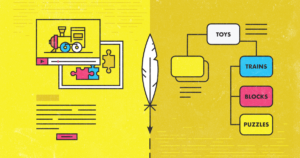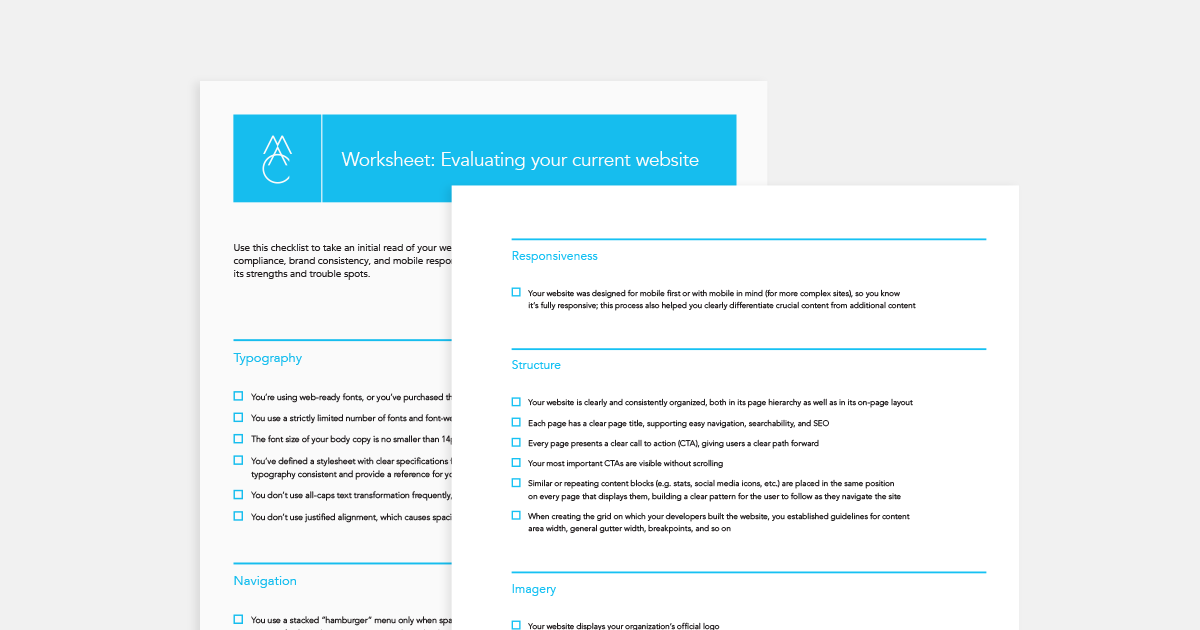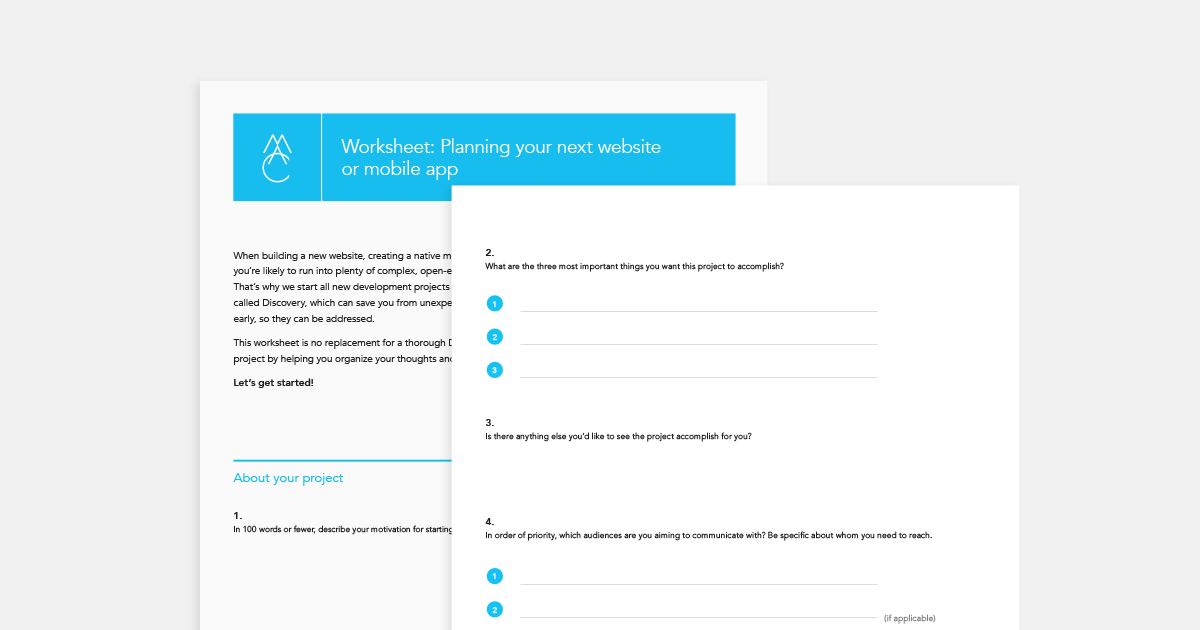
If Content Is King, IA Is the Castle
Every effective website needs a foundation. Within it, content strategy and information architecture (IA) are two essential layers. These strategic planning elements provide a home for your website’s content to live and grow and serve your organization. And content is, of course, everything.
“Your content is your website,” says Neil Patel, founder of Crazy Egg.
Here at the MAC, content strategy and IA documents are developed during an initial phase of work we call Discovery. Our research and strategy process involves several steps, typically in this order:
- Stakeholder interviews
- Competitive analysis
- Website and brand audit
- User personas
- Content strategy
- Information architecture
- Functional requirements and specifications
- UI design mood boards
Before going further, let’s define the two terms central to this article.
Content strategy is a systematic way to describe your organizational goals, brand promise, and target audiences. In other words, what do you want to say, and who do you want to say it to?
It will also note which type of content is needed where — e.g. a paragraph of text, a video, a gated article, an infographic, or anything else that will tell your story and guide users along a desired path.
It may also include some preliminary keyword research to bring your content into focus with your users’ goals, baking in SEO right from the start in a way that adds value to your audience — rather than slapping it on later as an afterthought, in a way that neither users, nor search engine algorithms, appreciate. (More on content strategy elements here.)
Information architecture (IA) flows out of the content strategy. Its purpose is to concisely communicate the underlying structure and organizational hierarchy of the website.
An IA can take the form of a simple Word document outline, or it can be a more elaborate tree diagram with boxes and lines that show how a user can get from one page to another. Either way, the IA describes how the content of your website is organized in terms of pages, subpages, and sub-subpages. And — importantly — it also assigns names to identify those pages in your navigation bar.
You can think of your content strategy and IA as two sides of the same coin. Content strategy will influence IA, and visa versa. Because they directly impact one another, they should be created and refined more or less simultaneously.
A collaborative, iterative process is especially important when more than one person is developing these documents. At the MAC we’ll often have one of our content developers take the lead on the content strategy, while a UX designer will take the lead on the IA. These two individuals work closely together during the research and strategy phase, influencing one another. Out of that collaboration, we arrive at a final product that really serves the user and supports our client’s goals.
Which brings us to our next point. Content strategy and IA aren’t just a static reflection of your organization’s vision, purpose, and goals. They also empower you to develop your story and tell it in a more compelling way.

Content (words, photos, videos, etc.) and architecture (site structure and navigation labels).
Two tools to tell your story
Here’s what I mean by this.
Let’s say you produce children’s toys that are handmade in Virginia from sustainably-sourced materials, and you sell your wares through an online storefront. These high-quality trains, building blocks, and puzzles are not for every parent with a two-year-old. Your target customer is someone who likes to shop at local, independently-owned stores and prefers quality over quantity. These are people who care about the environment and the way that their actions impact future generations, and they’ll pay a premium to feel good knowing their purchases are not depleting the earth’s natural resources.
Now let’s imagine how the IA and content can work together to tell a complete story on the homepage of your company’s website. The first thing visitors might see is a large photo of a bright-eyed toddler in a modern playroom, stacking a colorful wooden pyramid. Over the top of the photo are the words “She may not know it’s handmade with sustainable Virginia hardwood, but her smile says you bought the perfect gift.”Then, along the top of the page is a navigation bar with the following links: Handmade Toys for Toddlers | Green Gifts from $50 | Our Sustainability Promise.
As you can see from this example, your website’s content (photos and words) and IA (navigation labels) each have a role to play in differentiating your product and company from a thousand other online toy stores.
An alternative course of action would be to use more common terms for the IA such as: “Toy Catalog | Gifts on Sale | About us.” But these labels won’t help you differentiate from competitors, and they don’t help you tell your story. Generic terms, by definition, paint a picture that makes you look and sound like everyone else.
Be different, and be yourself
Upon arriving at any new website, the first question all website visitors subconsciously ask themselves is: Do I care about what I’m looking at? Yes (stay) | No (leave).
People are impatient. Especially when browsing the web. You’ve got just a few short seconds to communicate what you’re offering them — be it uncommon information, a useful new product, or a better service than that of your competitors. Good content, paired with a good IA, plays a major role in your ability to give people confidence they’re in the right place.
Unless you manufacture water or oxygen, what you offer is not for everyone. The more specific and clear you’re able to be, the more success you’ll have at attracting those who align with your mission and want what you’re offering.
This article is also published on Medium.
More Resources
-

Worksheet
Evaluating your current websiteUse this checklist to evaluate your website’s user experience, ADA compliance, brand consistency, and mobile responsiveness, and to start identifying...
-

Worksheet
Planning Your Next Website or AppWe recommend starting any new development project with a thorough research and strategy phase called Discovery, which can save you...
-

Article
How to match your marketing funnel with web content strategyIn the rare case, a visitor comes to your website and immediately signs up for your service or purchases your...



